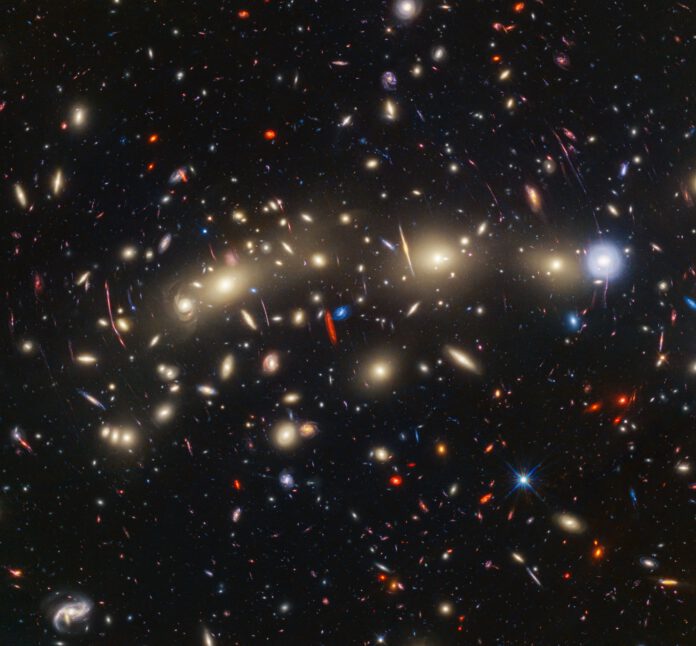
A Early Christmas Card from the James Webb Space Telescope
Even though it may seem a bit early for Christmas cards, the James Webb Space Telescope does not seem to think so. It has managed to capture a magnificent image of MACS0416: a pair of galaxy clusters that are 4.3 billion light-years away from our planet. Over time, these clusters are fated to merge, forming a single, larger cluster.
MACS0416 through Hubble and James Webb
The cluster MACS0416 has also been captured by the Hubble Space Telescope. Yet, the image obtained by James Webb reveals many fainter galaxies that remain invisible in the Hubble image. This superior performance is thanks to James Webb’s sharp infrared vision, which allows the telescope to see farther distances, as well as peer through gas and dust clouds. What’s remarkable is the detail visible in the James Webb image, given that it had a significantly shorter exposure time than the Hubble image – 22 hours as opposed to 122 hours.
The two images have been superimposed to reveal an incredible amount of detail. Because these clusters act as massive gravitational lenses, the light from galaxies farther away is amplified and/or bent. This results in streaks appearing here and there in the image. The different types of galaxies found within these clusters vary widely, including irregular galaxies, spiral galaxies, and elliptical galaxies.
The ‘Christmas Tree Cluster’
MACS0416 is also known as the ‘Christmas Tree Cluster’, not to be mistaken with another Christmas Tree Cluster located closer to Earth. The moniker seems apt with its myriad twinkling galaxies.
Astronomers enjoy observing this section of the sky due to the many changeable star systems, or transients, on display. These star systems exhibit varying brightness levels. If stars and galaxy clusters align optimally, the light of certain stars is temporarily amplified to extreme levels, causing a spike in their brightness. However, as celestial bodies are always in motion, the lensing effect changes, resulting in fluctuations in brightness.
Discovering the Transients
Scientists have discovered fourteen such transients, twelve of which are located in three galaxies. One transient exists in a galaxy that was formed three billion years after the Big Bang. The gravitational lens amplifies this galaxy’s light by 4,000 times, making the variable star system – named “Mothra” – visible to the observers. Astronomers suspect multiple lensing effects, with several objects collectively amplifying Mothra’s light. Calculations suggest one of these objects is a spherical star cluster with a mass ranging from 10,000 to one million. “This spherical star cluster is too faint to see directly, so we can’t be absolutely certain,” concluded Jose Diego, the lead author of the study published in Astronomy & Astrophysics.











